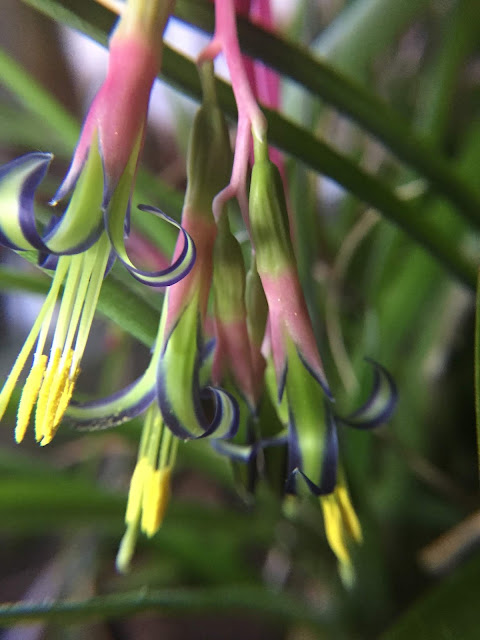TPP has just been too busy. Two programs involving the herbarium and its contents, so panel discussions and visiting speakers. It's great but busy and TPP is not used to so much activity. And then there are house and garden things, repair and alter water damaged rooms, removal of dead (sadly) shingle oak that had been in decline all summer. It was a substantial tree at 33" dbh and probably around 85-90 feet tall. Even the pros had to work hard to take it down mostly because it was a bit close to our house and its crown over topped part of our roof and awaiting for the next ice storm to take part of it down is not sound policy. My feline office assistant just showed up, so it's getting harder to see the monitor and to type. Arrival announced by head butting of TPP's right elbow; a sign of affection.
Weather has been a bit absurd, too warm especially at night so no frosts yet and it's the 21th of October. Without cold nights to stop the chlorophyll production, leaf color has not started to change yet with a few exceptions.
Stopped by the coffee Shoppe and TPP's latte came to $4.10. Handed the young woman counter clerk a 5-dollar bill and a dime. She did not know what to do and had to ask for help. Sad. As a grade school kid TPP remembers making currency and setting up a pretend store in the classroom for the purpose of learning how to handle money and change. Of course TPP has resisted setting up his phone to pay via blue tooth is it? So he is probably looked upon sadly by young counter clerks. Imaging this guy used cash rather than his phone to pay for coffee.
Back to the weather thing. Quite a few things are in flower, some because it is their season, the wolfbane, the Asian anemones, and some summer hold overs. But this one was a surprise, an "ever-blooming" Iris given to Mrs. Phactor by a friend. It seems to like the late fall weather and has responded by having a 2nd flowering.






























































